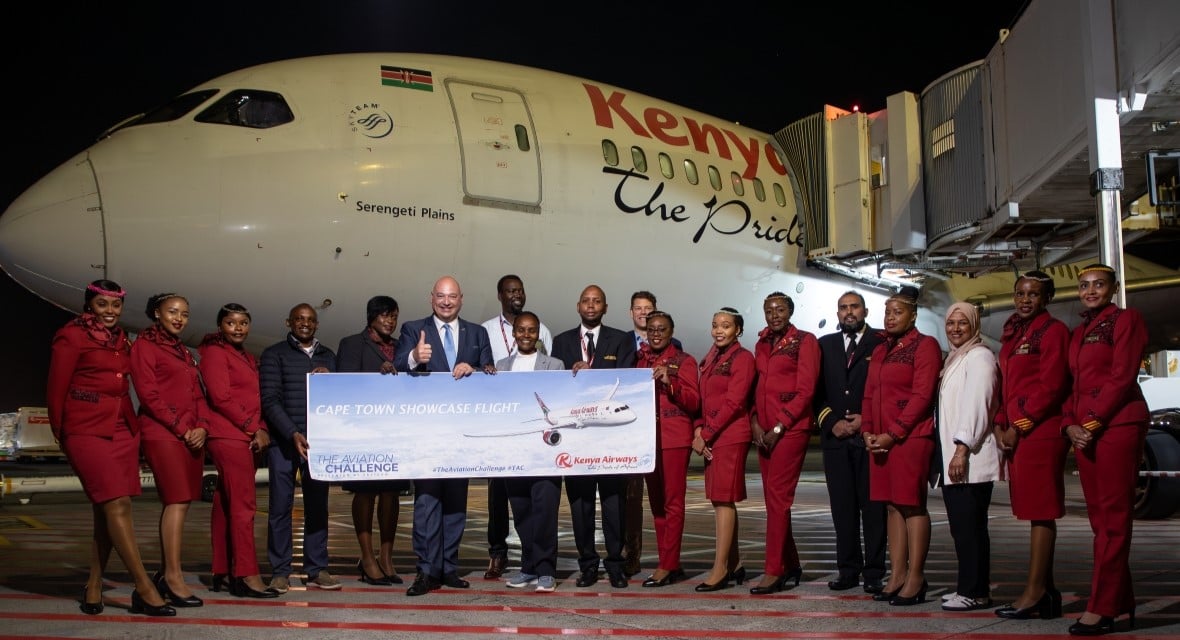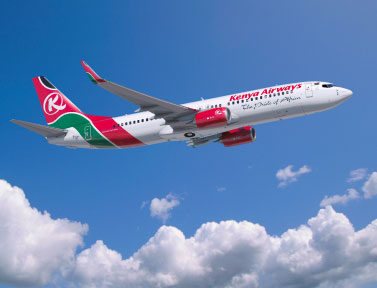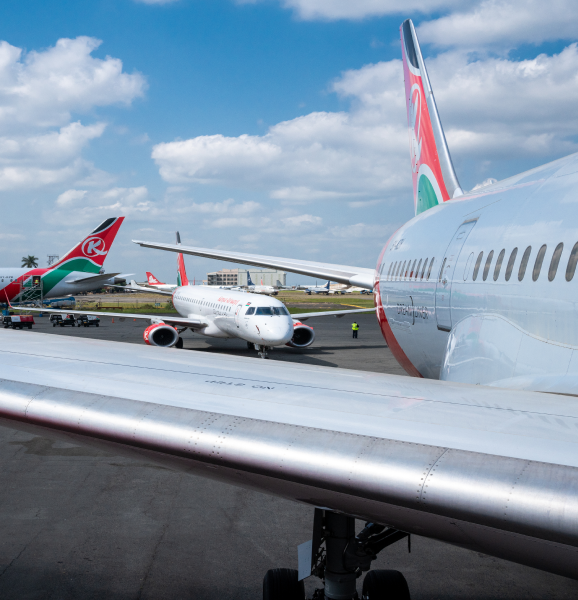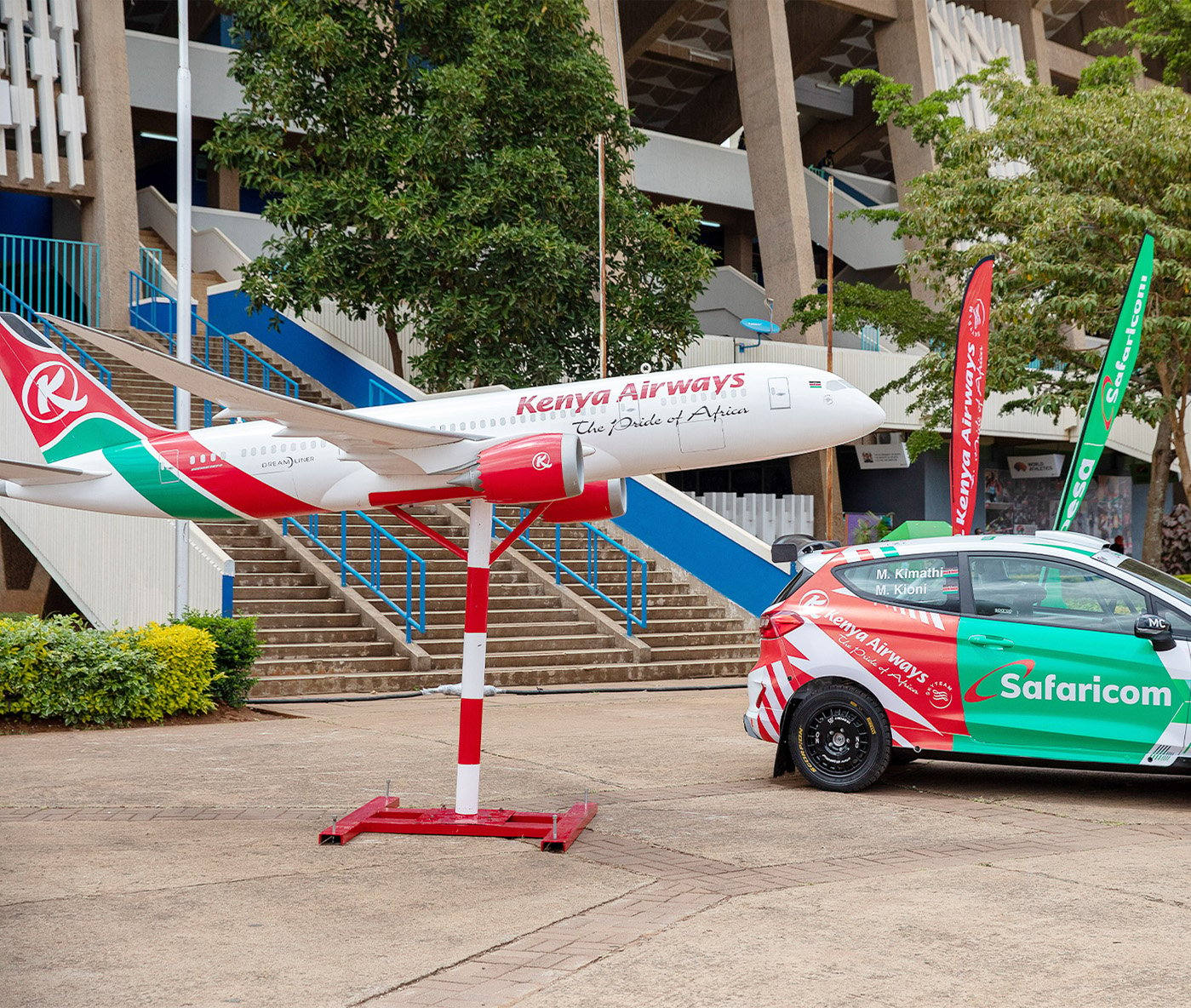07 Nov 2025
Customer Updates
From Nairobi to Cape Town: How Innovation Turned a Setback Into Africa's SAF Breakthrough
“The dream nearly crashed, but what happened next redefined how Africa leads on sustainable aviation”
By Sharon Kiende

Prologue: The Dream That Nearly Didn’t Take Off
At 5:25 PM on 21st October, a Kenya Airways Boeing 787 Dreamliner gracefully ascended into the Nairobi sunset bound for Cape Town. This wasn’t just any flight; it was meant to be Africa’s first flight powered by homegrown Sustainable Aviation Fuel (SAF). Yet, behind the scenes, very few knew just how terrifyingly close this pioneering journey came to being grounded.
Kenya Airways had meticulously prepared for months. Expectations were high, centred on a local supplier providing the crucial HEFA (Hydroprocessed Esters and Fatty Acids) SAF, made from used cooking oil. But then, a mere two weeks before the scheduled delivery, a letter arrived and the dream, for a moment, flickered. This setback could have easily grounded the entire initiative. But instead of throwing in the towel, Kenya Airways made a pivotal, audacious choice. A decision that would not only rescue the flight but also profoundly redefine what sustainability looks like in emerging markets.
Act 1: Turning a Setback Into a System
The team, fuelled by unwavering determination, executed a full strategic change in only two weeks. Delaying the flight was simply not an option. Instead, they embraced a fresh, verifiable solution: SAF Attributes. Think of these as the certified environmental value of SAF, meticulously tracked and transferable through an ingenious Book and Claim system. These attributes don't physically fuel the plane, but they definitively represent the carbon savings achieved from certified SAF produced elsewhere. Each tonne of verified SAF generates a corresponding digital certificate, rigorously tracked under the exacting ISCC EU RED and RSB CORSIA standards.
Kenya Airways didn’t hesitate to purchase 50% worth of these verified attributes. This strategic move ensured that for every single litre of conventional fuel consumed on the flight, an equivalent amount of SAF was accounted for on a global scale. This is an African first, a model seamlessly aligning with both the International Civil Aviation Organization’s CORSIA and (International Air Transport Association (IATA) frameworks. It is powerful proof that meaningful decarbonization is not some distant future; it could begin immediately, even before local refineries fully scaled up their certification and production. As one engineer candidly reflected, “We couldn’t uplift our own SAF yet, that much was true. But what we could do was make sure every drop of fuel we used contributed to environmental sustainability.”
Act 2: How the Flight Became a Movement
The innovation truly caught fire with the introduction of Kenya Airways’ forward thinking Environmental Compensation Program. This initiative brought corporate customers directly into the sustainability fold, as they became crucial financiers of the SAF attributes. Each participating company purchased Sustainable Aviation Fuel Certificates (SAFc), tangible representations of verified tonnes of CO₂ emissions avoided.
These funds, precisely and transparently, enabled the airline to acquire the necessary SAF attributes. In essence, this gave every single passenger a genuine, measurable share in the collective climate progress. This was environmental compensation done right: transparent, meticulously traceable, and linked to measurable, real-world outcomes, a far cry from abstract or unverifiable offsets. For the corporate partners, it meant achieving concrete Scope 3 emission reductions, all rigorously verified through established international systems. And for Kenya Airways, the Cape Town flight transcended symbolism. It transformed into a data backed, powerful demonstration of African climate leadership, setting an inspiring precedent for the entire industry.
Act 3: The Cape Town Effect
When KQ784 touched down, it carried a story of resilience and reinvention. At the arrival ceremony, Kenya Airways, WESGRO, Airports Company South Africa, the City of Cape Town, and SkyTeam unveiled a partnership extending beyond fuel:
When KQ784 gracefully touched down in Cape Town, it carried far more than its passengers. It carried a profound narrative of resilience and audacious reinvention. At the vibrant arrival ceremony, Kenya Airways, hand in hand with WESGRO, Airports Company South Africa, the City of Cape Town, and SkyTeam, unveiled a transformative partnership. whose vision extended far beyond just fuel:
- Water Stewardship: Innovative rainwater harvesting, smart greywater reuse, and meticulous semi dry aircraft cleaning cut water consumption by an impressive 90%.
- Circular Cabin Design: Thoughtful initiatives like upcycled headset covers, Forest Stewardship Council (FSC) certified paper products, amenity kits cleverly crafted from recycled corks, and robust rotable utensils eliminated 16 kg of single use plastics.
- Operational Efficiency: Pioneering route optimization and precise continuous descent approaches resulted in a significant saving of 1.2 tonnes of fuel.
- Inclusivity: Over 1,200 dedicated staff members received comprehensive sustainability training, with a powerful emphasis on women engineers leading the charge in innovations.
Most importantly, they launched a Regional SAF Roadmap, which is a cooperative framework designed for African governments to accelerate local SAF certification and production.
Act 4: Proof That Impact Is Not Perfection
The flight's data wasn't just impressive; it told a compelling story of dedicated action:
Impact Area and Result (2025)
- SAF Attributes (ISCC EU RED & RSB CORSIA): 50 % of total fuel load
- Fuel Saved: 1.2 tonnes
- CO₂ Reduction (SAF + Ops + Offsets): ≈ 4.3 tonnes
- Ground Emissions Avoided: 264 tonnes CO₂ annually
- Plastics Eliminated: 16 kg
- Passenger Engagement: 85 % QR scan rate
- Local & Regional Partners: WESGRO • ACSA • City of Cape Town • SkyTeam • 7 suppliers & universities
The numbers were strong, undeniably so. But the profound lesson forged by this challenging journey was even stronger: Sustainability is not about never failing; it is about never stopping. Kenya Airways did not merely postpone progress; it brilliantly redefined what innovation looks like when operating under pressure. It stood as a powerful testament, demonstrating unequivocally that Africa neither waits for external permission nor for an elusive, perfect set of conditions. It proactively finds its pathways forward, crafting solutions in real time.
Epilogue: The Flight That Made a Framework
As Kenya Airways’ Chief Strategy & Innovation Officer Hellen Mwariri shared, “This milestone is not just symbolic. It’s measurable proof that African airlines can deliver real emission reductions today and still build the future for tomorrow.”
The Cape Town Showcase Flight wasn’t ultimately powered by what physically went into its tanks. It was powered by something far more fundamental: the spirit that infused the entire idea. A spirit of unwavering cooperation, absolute transparency, and a steadfast refusal to accept “not yet” as any kind of excuse. This, precisely, is what makes it an undeniable winner. Because in the dynamic world of aviation, true impact is never about passively waiting for conditions to be perfect. It’s about taking to the sky anyway, adapting, innovating and leaving the sky better than you found it.
When Flight KQ784 left Nairobi, it carried 200 passengers and, more profoundly, proof that resilience is indeed the most sustainable fuel of all.
Related news
07 Nov 2025
Customer Updates
“The dream nearly crashed, but what happened next redefined how Africa leads on sustainable aviation” By Sharon Kiende

07 Nov 2025
Customer Updates
“The dream nearly crashed, but what happened next redefined how Africa leads on sustainable aviation” By Sharon Kiende

31 Oct 2025
Customer Updates
News
Nairobi, Kenya – 22nd October 2025 _Kenya Airways has operated its first intra-African flight using 50% Sustainable Aviation Fuel (SAF) attributes under a mass balance system, in line with international standards by the International Air Transport Association (IATA) and the Carbon Offsetting and Reduction Scheme for International Aviation (CORSIA).

26 Sep 2025
Customer Updates
News
Impact at a Glance: • 1.42 million tonnes CO₂ emitted in 2024, driving urgency for change. • 0.02% CO₂ avoided annually through electrification of baggage handling vehicles • 2% SAF blend on all European flights since January 2025, reducing CO2e emissions annually. • TAC Showcase Flights contribute an additional ~0.002% CO2e emissions reduction • 5 million passengers served each year, directly experiencing sustainability in action.



